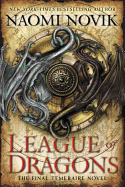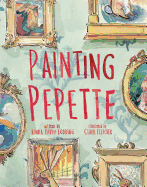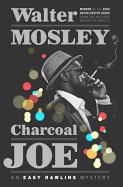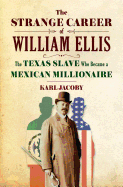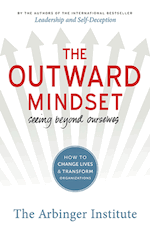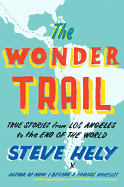Tuesday, June 14, 2016
Many bookstores offer travel trips to regional literary sites, and a few have been making treks abroad. France, Italy and the U.K. are popular destinations, and even South Africa is on one store's itinerary.
 |
|
| Glenapp Castle, Scotland | |
Next week, Rainy Day Books in Fairway, Kan., which has earlier traveled to England and Italy, is embarking on its third summer Literary Tour. Accompanied by store co-owners Roger Doeren and Vivien Jennings, 14 book lovers will visit Scotland from June 19 through July 2. The group will see Eilean Donan Castle and Balmoral Castle, stay in Glasgow, Edinburgh and the "palatial" Glenapp Castle Hotel, and make excursions to literary destinations such as the home of poet Robert Burns and a four-night stay at Edinburgh's Balmoral Hotel, where J.K. Rowling finished writing the Harry Potter series.
Politics & Prose in Washington, D.C., which has had a formal travel program for about five years, is offering three larger group trips, two heading to Italy's Tuscan region in the fall and the third to South Africa in January, plus a program for smaller groups to visit Paris with more flexible itineraries.
 |
|
| South Africa in January | |
The trip to South Africa is scheduled for January 8-15 and includes cultural and historical sightseeing in Cape Town, a day at South African wineries, a cable car ride up Table Mountain, and visits to botanical gardens and nature reserves. Participants have the option of staying on an extra three days at a private game reserve in the countryside.
From September 22-26, BookPeople of Moscow, in Moscow, Idaho, is planning a writing workshop with author Kim Barnes (In the Kingdom of Men; A Country Called Home) and poet Robert Wrigley (Beautiful Country; Lives of the Animals) at Spannocchia, a working sustainable farm and historic estate in Tuscany. Barnes and Wrigley, who are husband and wife, will teach workshops in creative nonfiction and poetry. Bookpeople of Moscow co-owner Carol Spurling has been to Spannocchia and says, "It was even better than I hoped. The food was delicious, the people who work there and run its programs are wonderfully hospitable and their mission is so important."
Vinegar Girl
by Anne Tyler
Vinegar Girl is the third in Hogarth Shakespeare's line of retold classics by the Bard (The Gap of Time, Shylock Is My Name). Anne Tyler's delightful, clever novelization sets The Taming of the Shrew in present-day Baltimore, Md., holding faithfully to Shakespeare's plot and concept but presenting far more complex characters, with absolutely charming results.
Kate is 29 and lives with her absent-minded microbiologist father, Dr. Battista, and her younger sister. She serves as housekeeper and chaperone, not that they appreciate her efforts. Her real passion is gardening. As Vinegar Girl opens, Dr. Battista faces a problem: his gifted foreign assistant, Pyotr Cherbakov, is in the U.S. on an extraordinary-ability visa that's about to run out. Dr. Battista feels sure he's on the verge of a breakthrough, but he needs Pyotr to be able to stay a little longer. The reader realizes well ahead of Kate that what her father has in mind is an arranged marriage. The prickly Kate feels she's been taken advantage of long enough; she finds Pyotr pushy, and she isn't looking for a husband, anyway.
Vinegar Girl's modern setting and language enliven a classic tale of controversy and gender politics. The novelistic form illuminates the inner workings of Shakespeare's characters, revealing attractive nuances. Readers unfamiliar with The Taming of the Shrew will have no problem enjoying this novel, which is funny, fun loving and uplifting. Those who know the original well will be intrigued by Tyler's riffs. In either case, the surprising ending, which deviates from Shakespeare's in important ways, makes for a heartwarming conclusion to a quirky, timeless tale. --Julia Jenkins, librarian and blogger at pagesofjulia
Discover: Anne Tyler reinterprets The Taming of the Shrew in a modern, pleasingly nuanced novel.
Walking the Dog
by Elizabeth Swados
"The freedom is exhilarating. The disappearance of gates is terrifying." In Walking the Dog by composer, writer and director Elizabeth Swados (My Depression), Carleen Kepper is out on parole from a life sentence she received at age 18. She is now 43, with a dog-walking job in downtown Manhattan.
Before prison, Carleen was Ester Rosenthal, a celebrated multimillionaire artistic prodigy and a spoiled uptown drug addict with a love of theft that escalated to a deadly gang heist of a jeweler's truck. The merciless violence of prison exacerbated her mental illness, and a conjugal visit with her ex-husband resulted in a daughter she doesn't know. While in prison, she was forced to make art for others but eventually found a new calling as a gifted dog trainer. "I stayed in the motion of dogs, and I found a permanent boundary between my hellish impulses and what was good for animals." With the help of a glamorous Hebrew tutor, Carleen begins to connect with her mistrustful 11-year-old daughter, both of them lurching between curiosity and revulsion. Clients attempt to befriend her, an old artist friend insists on reconnecting, and she begins to piece together a new life.
Swados is an eloquent, unsentimental writer with a dry, black sense of humor. She has a sharp eye for human and canine character and an excellent sense of dramatic pacing, moving between Carleen's present and past, developing her relationships, unfolding her memories and delusions, exposing deeply layered emotions. This is a rich, complex novel and may be one of the best of the year. --Sara Catterall
Discover: A 43-year-old artist on parole from a life sentence remembers her past and fights her demons while working as a dog walker in downtown Manhattan.
The Space Between Sisters
by Mary McNear
Poppy and Winona both loved the golden summers they spent with their grandparents at Butternut Lake when they were kids. But that's about all the two sisters have in common these days. Free spirit Poppy, who's never had a serious job or a stable relationship, suddenly shows up at Win's door one night with a strange man in tow. Uptight Win, who has become a bit of a recluse since her husband passed away and she inherited her grandparents' cottage, is annoyed, but can't turn her sister away.
Over the next few weeks, Win and Poppy will learn some surprising and occasionally shocking truths about each other, as the gentle pace and kind people of Butternut Lake weave their magic again. Along the way, each of them encounters a chance to find love, if they can be brave enough to grasp it and to forget the tragedies of the past.
Mary McNear (Up at Butternut Lake, Butternut Summer) has mastered the art of the quiet romance. With funny characters, a charming Minnesotan setting and a pleasantly predictable plot, The Space Between Sisters will appeal to fans of Kristin Hannah or Susan Wiggs. Those familiar with McNear's Butternut Lake trilogy are sure to be happy revisiting the town's memorable faces and places.
Readers looking forward to making some summer reading memories of their own, or eager to reminisce about the golden summers of their youth, need look no further than The Space Between Sisters. --Jessica Howard, blogger at Quirky Bookworm
Discover: Two sisters fall in love during a beautiful summer at Butternut Lake, Minn.
Mystery & Thriller
Charcoal Joe
by Walter Mosley
After 13 Easy Rawlins mysteries (most recently Rose Gold), Walter Mosley has honed his many characters to a crisp edge. A well-read African American with a taste for jazz and fine clothes, Easy moves just as comfortably in the offices and restaurants of West L.A. as he does in the barbershops and bars of Watts. When useful, he consults with both Ju-Ju seers and high-ranking police friends. As he describes himself, "I'm 90 percent pragmatist and the rest superstition." He also carries a gun.
Charcoal Joe features many of Easy's broad swath of friends, including Raymond "Mouse" Alexander ("one of the most dangerous men alive"); his right hand, Fearless Jones; industry executive Jackson Blue; and LAPD's Melvin Suggs. Mouse asks Easy to take a case helping notoriously powerful criminal Rufus "Charcoal Joe" Tyler. Easy owes Mouse and takes the case even though a bartender friend warns him off: "[Joe] don't play according to our rules.... If you after him--stop. If he want somethin' from you then give it up and move on." Bartenders are rarely wrong. Before long, Easy's persistent digging leads him to mob hitmen, money-laundering schemes and a string of corpses across the sprawl of Los Angeles. More insidious are the racial roadblocks put in his way by low-rent diner servers, high-rise security guards and belligerent traffic cops. He hates it but understands where the prejudice comes from: "I was a black man in a brown suit asking directions that would take me into the middle of a white neighborhood." Charcoal Joe is another winner in Mosley's long string of Easy Rawlins triumphs. --Bruce Jacobs, founding partner, Watermark Books & Cafe, Wichita, Kan.
Discover: In Walter Mosley's 14th Easy Rawlins mystery, his dogged detective fights crime lords, hired thugs and ever-present racism to solve a murder case in 1968 Los Angeles.
Science Fiction & Fantasy
League of Dragons
by Naomi Novik
In the ninth and final volume of the Temeraire series, Naomi Novik (Blood of Tyrants) gives a satisfactory sendoff to one of the most thrilling and immersive fantasy series on today's shelves.
Honorable Captain Will Lawrence of the British Aerial Corps and his Celestial dragon Temeraire have come to the end of a long road. After their defeat of Napoleon in Russia, both the French and Allied forces suffered grave losses in the bitter winter. Both sides scramble for a weapon or alliance that could end the war once and for all. Temeraire and Lawrence learn Napoleon has stolen a priceless object from their friend, the Crown Prince of China--an egg that holds the offspring of Temeraire and the fire-breather Izkierka. However, the heroes will find rescuing an egg from French clutches child's play compared to facing a young dragon with shifting loyalties, other British aviators' continued hatred for them after their noble but treasonous actions in Empire of Ivory, and Napoleon's most dangerous gambit yet, a concord that could change the face of the dragon/human power balance across Europe.
Novik packs in plenty of what made this series a hit in the first place, particularly acutely imagined battle scenes, high-stakes decisions and snappy dialogue from those delightful dragons, who have as much or more intelligence as humans, coupled with the innocent self-interest of the average cat. Newcomers should begin with His Majesty's Dragon, while fans will take the slightly open ending of League of Dragons as hope Temeraire may fly again someday. --Jaclyn Fulwood, blogger at Infinite Reads
Discover: League of Dragons is a thrilling swan song for Novik's draconic alternate history of the Napoleonic wars--provided you've read the preceding eight books.
Biography & Memoir
I'm Just a Person
by Tig Notaro
Stand-up comedian, writer and actress Tig Notaro's slim, harrowing and unashamedly emotional memoir, I'm Just a Person, focuses on a series of devastating blows she was dealt over a four-month period in 2012--beginning when she was hospitalized with clostridium difficile colitis (C. diff), a bacterial infection that is often fatal. Days after leaving the hospital, Notaro discovered her mother had fallen, hit her head and was now in a coma, being kept alive just long enough until she and her brother could fly home. A few weeks after the funeral, Notaro was diagnosed with invasive stage II breast cancer and told she needed a double mastectomy.
Nine days after her diagnosis, Notaro (who's appeared on Inside Amy Schumer and Transparent) was back on stage at a comedy club. Instead of doing her familiar material, she decided to talk about her cancer. Fearing it could be her last stand-up, she asked a friend to record it. The next morning, she was trending on Twitter and Rolling Stone magazine wanted to interview her. Comedian Louis C.K. convinced her to sell audio downloads of her show on his popular website. It earned her a Grammy nomination. "I certainly never imagined that success would arrive in tandem with stress, mourning, and a deadly disease," she writes.
Artist Tony Achilles provides excellent illustrations throughout the book, but there are few laughs in Notaro's memoir about grief, mortality and unexpected success. Her writing, however, is so concise, thoughtful and revealing, readers won't miss them any more than they did in Steve Martin's Born Standing Up or Joan Rivers's Enter Talking. --Kevin Howell, independent reviewer and marketing consultant
Discover: Comedian Tig Notaro delivers an observant and emotional memoir of the year she battled profound grief and a stage II cancer diagnosis at the same time her career skyrocketed.
History
The Strange Career of William Ellis: The Texas Slave Who Became a Mexican Millionaire
by Karl Jacoby
A history book hits home when it offers judicious research and clear writing, along with a focus on events and people that reflects their own times and resonates in ours. Columbia University social historian Karl Jacoby (Shadows at Dawn) touches all the bases in The Strange Career of William Ellis. Born in 1864 near the end of the Civil War, Ellis was a light-skinned African American slave on a cotton plantation in the small southern Texas town of Victoria. He grew up bilingual in an area where property-owning Mexicans were more accepted than recently emancipated slaves. As an ambitious freedman, Ellis left the fields to work for a small trading company brokering cotton and leather across the Mexican border. He then moved to San Antonio, changed his name to Guillermo Enrique Eliseo, and set up his own business.
Still reeling from war, and absorbing free blacks after slavery's demise, both Mexico and the United States were on the cusp of the Gilded Age when the smooth-talking Ellis parlayed his ambiguous racial and national identity into enough wealth to move to New York to found what would later be recognized as the first African American brokerage on Wall Street. With his "carefully waxed mustache, impeccable tailoring, ostentatious jewelry, and lavish distributions of Cuban cigars and Mexican leatherwork," he could play an aristocratic Mexican, Cuban, African, even Hawaiian as needed to close a lucrative deal. In Ellis's story, Jacoby has found the perfect manifestation of that point in American history when race, language and class evolved to become the complicated issues with which we still struggle today. --Bruce Jacobs, founding partner Watermark Books & Cafe, Wichita, Kan.
Discover: Karl Jacoby tells the amazing story of a man born a slave in Texas, who becomes a millionaire businessman in Mexico--where he blends in as Mexican--and then sets up the first African-American brokerage on Wall Street.
Business & Economics
The Outward Mindset: Seeing Beyond Ourselves
by The Arbinger Institute
"United we stand, divided we fall." We've all heard this proverb, but how many of us understand how to create a unity of trusting collaborative synergistic relationships? The Outward Mindset from the Arbinger Institute explains how the most effective and lasting improvements in unifying any group are driven not by imposing behavioral changes, but by changing the mindset that drives people's behavior.
The Arbinger Institute is a global leadership consulting company founded in 1979 and based in Utah, with two acclaimed books (The Anatomy of Peace; Leadership and Self-Deception) on organizational and personal change. Unlike the Institute's previous works, which conveyed their ideas in fictional form, The Outward Mindset is a straightforward nonfiction work that illustrates its points with well-told case studies. These include a Kansas City SWAT team that earned the trust and support of its community, a successful debt-collection agency that helps debtors find jobs, a steel distributor, Ford Motor Company, an NBA team, an elementary schoolteacher, and individuals who have applied this approach in their personal relationships. The stories are absorbing, and the ideas are relatively simple; they may seem mostly obvious to some, completely counterintuitive to others.
Why do you like your favorite people, ask the authors? Because they make you feel heard and seen. You feel that you matter to them. When people feel this way, when they are not micromanaged but trusted to make decisions and plan their own work, they are more invested in their group, more helpful to each other, and more productive.
The key to achieving this is what the Arbinger Institute calls an "outward mindset." In this approach, individuals consider the needs of their group as a whole, and work to be responsive, helpful and collaborative, even with those they may have considered their antagonists. Rather than perceiving other people as mere objects--tools for achieving ends, obstacles, or irrelevant--they argue that to be most effective at work and in life, we should view all others as human beings. "Seeing people as people rather than as objects enables better thinking because such thinking is done in response to the truth: others really are people and not objects."
The opposite approach is an "inward mindset" in which people are blind to the needs of others and of their group, focusing only on their personal goals, an approach that wastes time and energy through misdirected efforts and lack of collaboration. Not caring about others often requires self-justification through demonizing them. An inward mindset can also make people less assertive than they need to be. "Wanting others to think well of them (a common inward-mindset motivation), people often indulge, pacify, or placate others when direct actions would be more helpful." They also describe what they call an "Outwardly Nice Inward-Mindset Style": people who feel as if they do good things for others all the time and experience themselves as being outwardly facing, while never considering what others truly need and want from them.
Attempts to change behaviors without addressing the underlying mindsets are likely to fail. "When people see situations that need to change, the temptation is to immediately apply a behavioral solution. That seems like the fast approach. But if mindset is not addressed, it is usually the slow approach to change." They point to research by the management consulting firm McKinsey & Company that said those "who attempt to effect change by concentrating on changing mindsets are four times more likely to succeed than those who focus only on changing behavior."
The Arbinger Institute asserts that the role of leaders is to empower others to plan and carry out their own work. They should examine how any special privileges they enjoy are dividing them from their co-workers, and make transparency and truth-telling safe for employees so that they can come forward with their difficulties and collaborate on solutions. The Institute also recommends the elimination of inflexible forms of measuring success that may drive people toward an inward focus out of self-defense. They provide guidelines for implementing their ideas regardless of one's position in a given group or organization, and discuss the challenge of responding with an outward mindset to people driven by an inward one. They emphasize the importance of not waiting for others to make the first move, but to focus on what one can do to change oneself. Even so, they say, "without a guiding result that requires all employees to pull together on behalf of others, outward-mindset cultures are difficult to sustain." The full commitment of leadership is required to transform an organization, and "those who persist with an inward mindset ultimately won't be able to stay with such an organization because their staying would not be helpful to them, the organization or their customers." No matter what their situation, any reader is likely to find in The Outward Mindset an inspiring guide to creating organizations and personal relationships that are greater than the sum of their parts. --Sara Catterall
Political Science
The Way to the Spring: Life and Death in Palestine
by Ben Ehrenreich
Ben Ehrenreich's The Way to the Spring: Life and Death in Palestine is a work of journalism written with the lyrical passion of a novelist. For his first nonfiction book, Ehrenreich (The Suitors) spent three years embedded with Palestinian families living in the West Bank. "I do not aspire in these pages to objectivity," he writes, instead invoking "something more modest than objectivity, which is truth." The Way to the Spring is unapologetically on the side of the Palestinian people, marshalling facts, history, anecdote and personal experience in order to persuade the reader to the author's point of view. That does not mean, however, that Ehrenreich's book is interested only in proving rhetorical points. The Way to the Spring functions primarily as an extraordinary love letter to a people that persist.
Ehrenreich has a good eye for the absurdities that emerge under occupation. In one example, he depicts a Palestinian house that was in the path of a wall being built between Israeli and Palestinian sectors. The owner refused to move, and Israeli authorities responded by building both the wall and fencing that left the family "caged in and cut off from the rest of the village."
We get only a peek into the settlers' worldview, however, because Ehrenreich's goal is not objectivity and he doesn't attempt to give anything like equal time. Instead, he analyzes the current situation as seen through Palestinian eyes: the complicated history that leads to the current moment, the hidden mechanisms of subjugation and the vast reserves of hope and bravery that insure the Palestinian people will continue marching to the spring. --Hank Stephenson, bookseller, Flyleaf Books
Discover: The Way to the Spring, a work of embedded reporting, documents Palestinian suffering and resistance in the occupied West Bank.
Psychology & Self-Help
Show Me All Your Scars: True Stories of Living with Mental Illness
by Lee Gutkind, editor
"In any given year, more than 50 million people in this country [the U.S.] have a diagnosable mental illness, and 15 percent of those can be considered seriously mentally ill," writes Lee Gutkind in his introduction. In Show Me All Your Scars, 20 people dealing with mental illness as well as the stigmas, the fears and isolation that go along with such a diagnosis tell their stories. The diseases run the gamut from suicidal depression to bipolar disorder, PTSD and psychosis.
These 20 essays feature vibrant writing that plunges readers deep into the world of the mentally ill. They are not easy to read--descriptions of attempted and successful suicides, of neglect, of cutting of arms and thighs and other compulsive behaviors--yet they are important. Gutkind writes, "I believe that one of the most important tools we have for combating stigma--by making it clear that mental health difficulties are not so unusual, and by fostering empathy and understanding and helping people appreciate others' experiences more fully and compassionately--is telling true stories." These stories place a spotlight on the emotional and physical battles millions with diagnosed mental illness face on a daily basis, allowing readers to gain deeper understanding and empathy about this commonly taboo subject. --Lee E. Cart, freelance writer and book reviewer
Discover: Twenty personal essays highlight what it means to live with mental illness.
Travel Literature
The Wonder Trail: True Stories from Los Angeles to the End of the World
by Steve Hely
When television writer (30 Rock, The Office) and novelist (How I Became a Famous Novelist) Steve Hely decided to leave Los Angeles to "go south," he didn't mean San Diego or even Cabo. No, this footloose funny guy, who had already circled the globe to write The Ridiculous Race, decided to go all the way south--down through Mexico along the Pacific coast of South America to "the bottom of the Western Hemisphere." With marginal Spanish-language skills ("Immersion is the best way to learn anyway"), Hely flew to Mexico City, spent three days walking in the giant metropolis, flew to Oaxaca to look at Mayan ruins and the "world's widest tree," and that was that for Mexico. His first steps into Central America, however, launched him into the meat of his journey and the serendipitous travel diary he calls The Wonder Trail.
Hely introduces readers to both locals and fellow travelers (like the four Australian vagabonds who take him in as they toot and drink their way across Colombia). He narrates archeological hikes, a boat ride down the Panama Canal, rickety bus travel on precarious mountain switchbacks, surfing the El Salvador coast, sailing to Galápagos, climbing up Machu Picchu and more. While he drops in many historical asides, cocktail napkin maps and background cultural context, there is no attraction here that can't be found in his trusty Lonely Planet guides. Instead, The Wonder Trail is a captivating road trip tale as much about Hely as about the road--even though, at 35, he admits he is on the raggedy edge of being too old for this stuff. --Bruce Jacobs, founding partner, Watermark Books & Cafe, Wichita, Kan.
Discover: Funny man Steve Hely's travelogue tracks his good-time journey down the Pacific coast of Latin America with enough history and culture to give it heft.
Children's & Young Adult
Painting Pepette
by Linda Ravin Lodding, illus. by Claire Fletcher
"Josette Bobette and her rabbit, Pepette, lived at #9 Rue Laffette, Paris." So begins Painting Pepette, the irresistible story of a girl who is so attached to her stuffed rabbit she's convinced her portrait deserves a spot in the family gallery along with "grand-mère and grand-père."
She takes Pepette to Montmartre, to the famous Parisian square "where the best artists in Paris painted." A man who is Picasso (identified inside the front cover and in the author's note but not in the story itself) spots her beloved rabbit and exclaims, "THOSE EARS!" Amusingly, he proceeds to paint Pepette with two noses and three ears. The three-eared portrait is hilarious... and not to Josette's taste at all... "And Pepette had to agree." A man with a bicycle-handlebar moustache stops to gaze at Pepette: "Please, I must paint the very essence of her rabbitness!" This is Dali. His portrait of the rabbit shows her draped bonelessly over a block, and is too "droopy" for Josette... "And Pepette had to agree." Chagall paints a flying-cloud rabbit (but Pepette is scared of heights!) and Matisse makes her too... pink. In the end, Josette knows just what she needs to do to capture her rabbit's "wonderfulness," her soft gray, listening ears and heart-shaped nose. She has to paint the portrait herself: "And Pepette had to agree."
Claire Fletcher's comical, endearing pen-and-ink and watercolor illustrations have a shimmering-melting quality that enchantingly enhances Linda Ravin Lodding's deliciously told story, a brilliantly accessible take on the nature of artistic interpretation. As Matisse tells Josette, "But through art we can see the world any way we want." Not to be missed. --Karin Snelson, children's & YA editor, Shelf Awareness
Discover: A Parisian girl wants a portrait of her rabbit, so she heads to Montmartre to find the right artist to paint it.
Every Single Second
by Tricia Springstubb, illus. by Diana Sudyka
Tricia Springstubb (What Happened on Fox Street; Moonpenny Island) has written a philosophical, often poetic, remarkably spot-on novel about universalities--growing up, family, friendship, honesty, faith, death, time and race--set in the context of the big, important preteen years of a present-day Italian American "skyscraper of a girl," 12-year-old Nella Sabatini.
Until a few years ago, life in Nella's Little Italy neighborhood strolled along steadily: the "Sacred Scent of Doughnuts" from Franny's shop; the familiar cemetery where her dad works; her Catholic school; the clamor of "the barbarians," aka her endless supply of younger brothers; her best-friendship with "secret sister" Angela DeMarco; and her quiet worship of Angela's older brother Anthony. It's third grade when Nella starts questioning everything, especially about right and wrong, good and evil. Can those who do bad things still be good people? Nella's questions about Angela's scary, angry, PTSD-stricken dad take on broader relevance as the girls grow, and grow apart. When Anthony is arrested for killing a black man, Nella's questions about judgment and redemption come even faster and more furious.
Springstubb alternates chapters identified as "now," "then" and a few variations on "What Jeptha A. Stone Would Say if He Could," the latter being the silent orations of a long-dead man in the neighborhood cemetery who watches over all in a blustery, self-righteous and ultimately lovable manner. Nella is authentic as a child who is emerging from her own age of innocence into a world of almost unbearable complexity and ambiguity. --Emilie Coulter, freelance writer and editor
Discover: In Tricia Springstubb's philosophical coming-of-age novel, 12-year-old Nella Sabatini grapples with shifting relationships and life's biggest questions.
| Advertisement Meet belle bear! |



